Fiat 500 vs Ford Kuga – Which car suits you better?
Compare performance, boot capacity, efficiency and price at a glance.
Find out which car is the better choice for you – Fiat 500 or Ford Kuga?
Costs and Efficiency:
When it comes to price and running costs, the biggest differences usually appear. This is often where you see which car fits your budget better in the long run.
Fiat 500 has a significantly advantage in terms of price – it starts at 21400 £, while the Ford Kuga costs 34200 £. That’s a price difference of around 12822 £.
As for range, the Fiat 500 performs significantly better – achieving up to 331 km, about 263 km more than the Ford Kuga.
Engine and Performance:
Under the bonnet, it becomes clear which model is tuned for sportiness and which one takes the lead when you hit the accelerator.
When it comes to engine power, the Ford Kuga has a decisively edge – offering 243 HP compared to 118 HP. That’s roughly 125 HP more horsepower.
In acceleration from 0 to 100 km/h, the Ford Kuga is clearly perceptible quicker – completing the sprint in 7.30 s, while the Fiat 500 takes 9 s. That’s about 1.70 s faster.
In terms of top speed, the Ford Kuga performs noticeable better – reaching 200 km/h, while the Fiat 500 tops out at 150 km/h. The difference is around 50 km/h.
There’s also a difference in torque: Ford Kuga pulls barely noticeable stronger with 240 Nm compared to 220 Nm. That’s about 20 Nm difference.
Space and Everyday Use:
Whether family car or daily driver – which one offers more room, flexibility and comfort?
Seats: Ford Kuga offers slightly more seating capacity – 5 vs 4.
In curb weight, Fiat 500 is slightly lighter – 1330 kg compared to 1526 kg. The difference is around 196 kg.
In terms of boot space, the Ford Kuga offers significantly more room – 412 L compared to 185 L. That’s a difference of about 227 L.
In maximum load capacity, the Ford Kuga performs clearly better – up to 1534 L, which is about 984 L more than the Fiat 500.
When it comes to payload, Ford Kuga decisively takes the win – 550 kg compared to 305 kg. That’s a difference of about 245 kg.
Who wins the race?
The Ford Kuga proves to be leaves the rival little chance and therefore becomes our DriveDuel Champion!
Ford Kuga is the better all-rounder in this comparison.
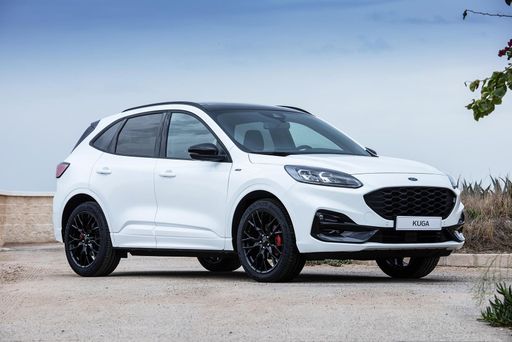
Ford Kuga
Fiat 500
The Fiat 500 is a compact and stylish city car that has captured the hearts of urban drivers with its charming retro design. Its nimble handling and efficient engine make navigating tight city streets a breeze, while its cosy interior offers a surprising amount of comfort and modern technology. The car's iconic silhouette and vibrant colour options ensure it stands out, offering a unique blend of timeless appeal and contemporary flair.
details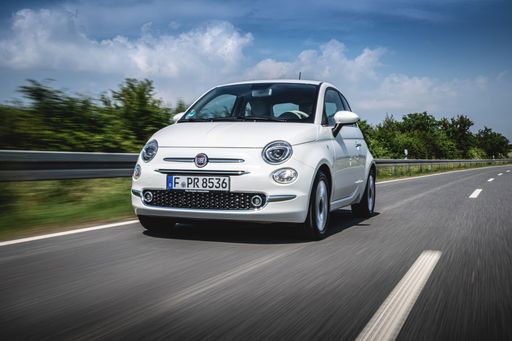 @ media.stellantis.com
@ media.stellantis.com
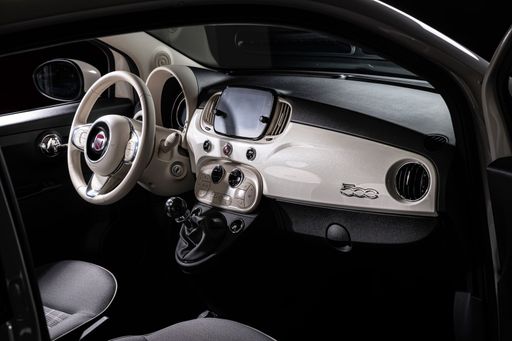 @ media.stellantis.com
@ media.stellantis.com
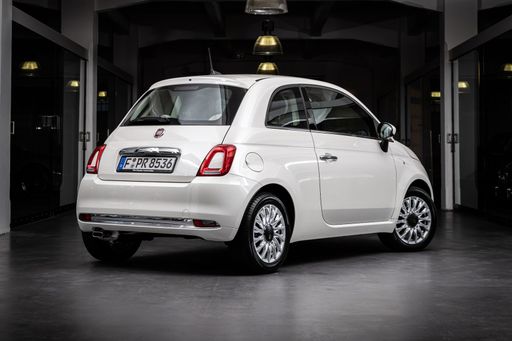 @ media.stellantis.com
@ media.stellantis.com
Ford Kuga
The Ford Kuga stands out in the realm of compact SUVs with its sleek design and dynamic performance capabilities. Its spacious interior is thoughtfully designed to provide comfort and practicality for both driver and passengers, making it an ideal choice for families and adventurers alike. Advanced technology and safety features further enhance the driving experience, ensuring a seamless blend of innovation and reliability on the road.
details @ kuga.fordpresskits.com
@ kuga.fordpresskits.com
 @ kuga.fordpresskits.com
@ kuga.fordpresskits.com
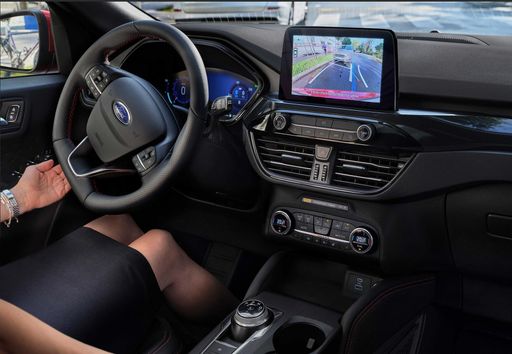 @ kuga.fordpresskits.com
@ kuga.fordpresskits.com

|

|
|
|
|
Costs and Consumption |
|
|---|---|
|
Price
21400 - 30800 £
|
Price
34200 - 46300 £
|
|
Consumption L/100km
-
|
Consumption L/100km
2.8 - 6.8 L
|
|
Consumption kWh/100km
13 - 14.7 kWh
|
Consumption kWh/100km
-
|
|
Electric Range
190 - 331 km
|
Electric Range
68 km
|
|
Battery Capacity
21.3 - 37.3 kWh
|
Battery Capacity
1.1 - 14.4 kWh
|
|
co2
0 g/km
|
co2
55 - 154 g/km
|
|
Fuel tank capacity
-
|
Fuel tank capacity
42 - 54 L
|
Dimensions and Body |
|
|---|---|
|
Body Type
Hatchback
|
Body Type
SUV
|
|
Seats
4
|
Seats
5
|
|
Doors
3 - 4
|
Doors
5
|
|
Curb weight
1330 - 1475 kg
|
Curb weight
1526 - 1859 kg
|
|
Trunk capacity
185 L
|
Trunk capacity
412 L
|
|
Length
3632 mm
|
Length
4604 - 4645 mm
|
|
Width
1683 mm
|
Width
1882 mm
|
|
Height
1527 mm
|
Height
1673 - 1681 mm
|
|
Max trunk capacity
550 L
|
Max trunk capacity
1534 L
|
|
Payload
250 - 305 kg
|
Payload
541 - 550 kg
|
Engine and Performance |
|
|---|---|
|
Engine Type
Electric
|
Engine Type
Petrol, Full Hybrid, Plugin Hybrid
|
|
Transmission
Automatic
|
Transmission
Manuel, Automatic
|
|
Transmission Detail
Reduction Gearbox
|
Transmission Detail
Manual Gearbox, CVT, Automatic Gearbox
|
|
Drive Type
Front-Wheel Drive
|
Drive Type
Front-Wheel Drive, All-Wheel Drive
|
|
Power HP
95 - 118 HP
|
Power HP
150 - 243 HP
|
|
Acceleration 0-100km/h
9 - 9.5 s
|
Acceleration 0-100km/h
7.3 - 9.9 s
|
|
Max Speed
135 - 150 km/h
|
Max Speed
195 - 200 km/h
|
|
Torque
220 Nm
|
Torque
240 Nm
|
|
Number of Cylinders
-
|
Number of Cylinders
3 - 4
|
|
Power kW
70 - 87 kW
|
Power kW
111 - 178 kW
|
|
Engine capacity
-
|
Engine capacity
1496 - 2488 cm3
|
General |
|
|---|---|
|
Model Year
2023 - 2025
|
Model Year
2025
|
|
CO2 Efficiency Class
A
|
CO2 Efficiency Class
E, D, B
|
|
Brand
Fiat
|
Brand
Ford
|
What drivetrain options does the Fiat 500 have?
The Fiat 500 is offered with Front-Wheel Drive.
The prices and data displayed are estimates based on German list prices and may vary by country. This information is not legally binding.
